2018 Honda HR-V Interior
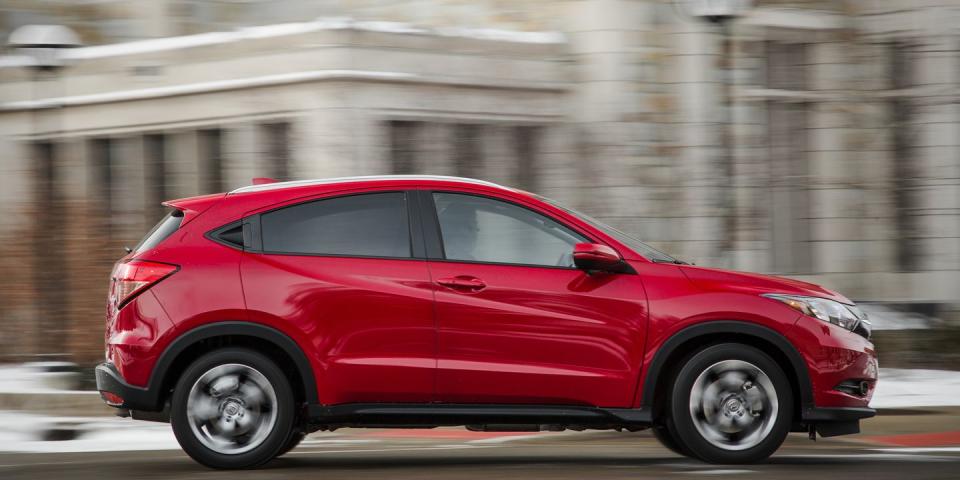
It's classy, well-made interior may not set hearts racing, but the HR-V’s cabin appears durable enough to stand the test of time. Outward visibility is good and passenger space is acceptable, but the lack of luxury features—even as options—means less pampering for you and your passengers.
What’s New for 2018?
No changes made and no additional features added.
2017 Honda HR-V
The spacious front seat will provide enough head- and legroom for all but the tallest adults. The rear seat has tons of legroom, too, but headroom isn’t as generous, thanks to the HR-V’s sloping roofline.
Front-Seat Passenger Space
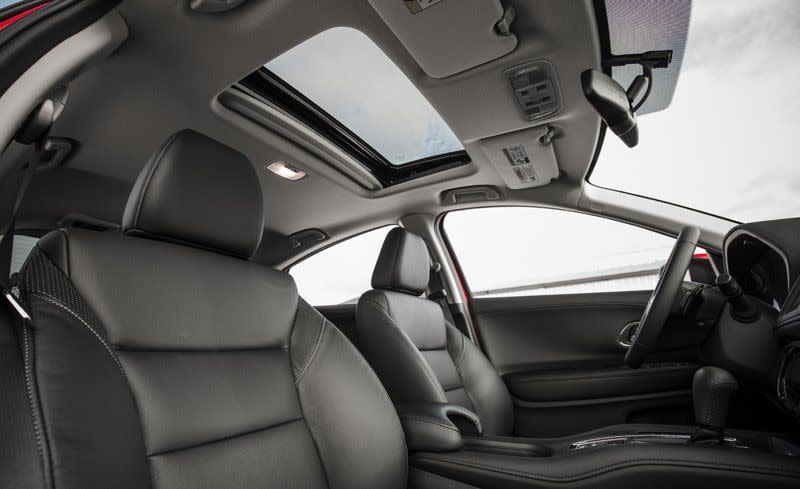
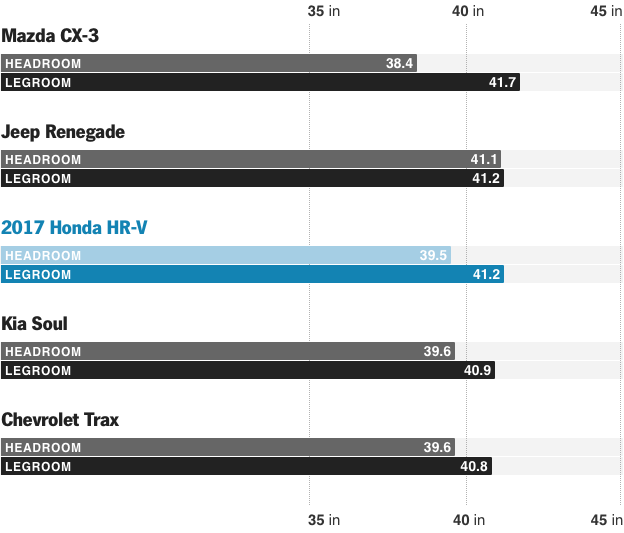
Back-Seat Passenger Space
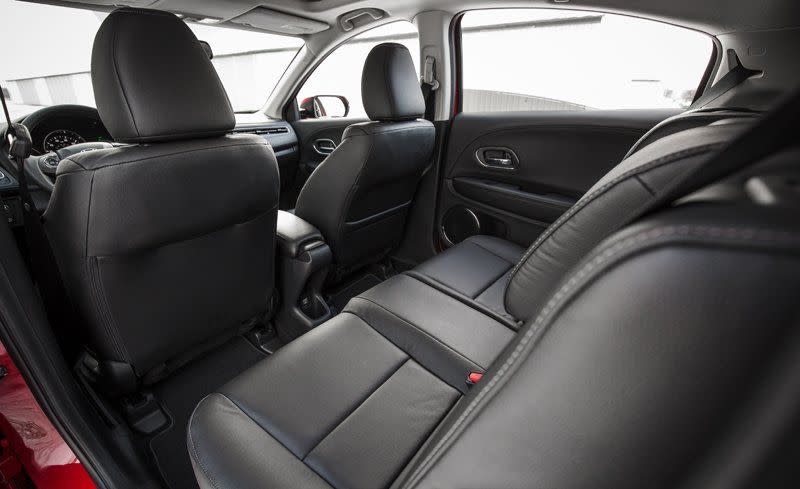
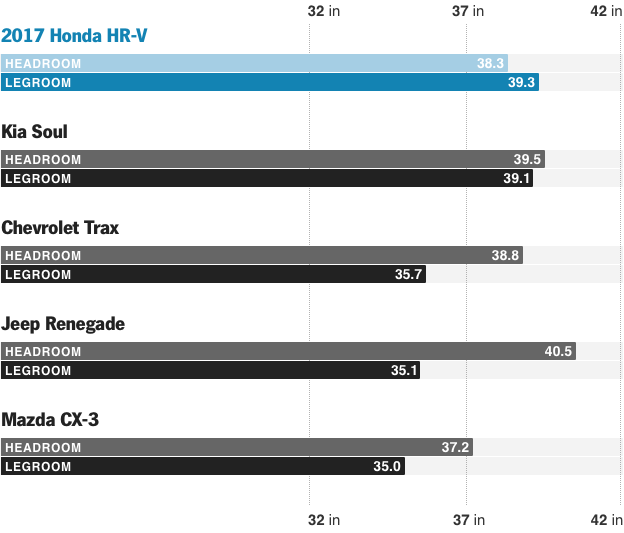
Interior Features
The HR-V’s front seats are firm but supportive enough for a long trip. There is no lumbar support for either the driver or passenger, and Honda offers no power adjustments for the front seats on any trim. The back seats are similarly firm but lack the bolstering of the front seats and could prove uncomfortable for adults on a long journey.
Seat Adjustments
Climate Control
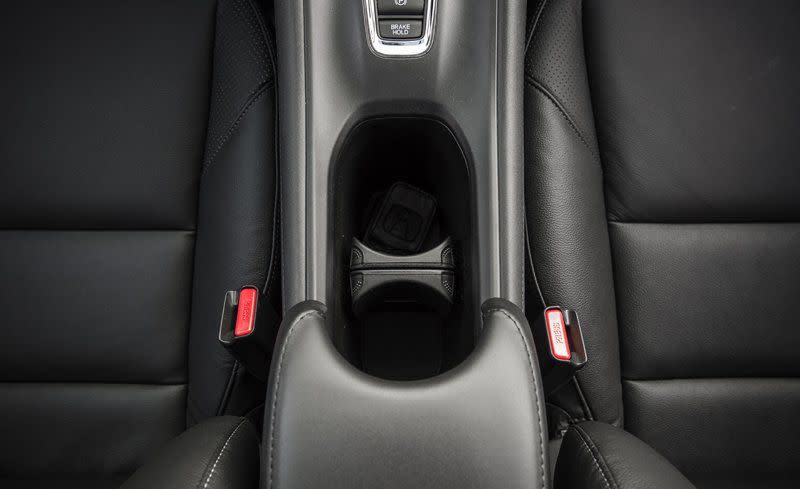
Cupholder Location
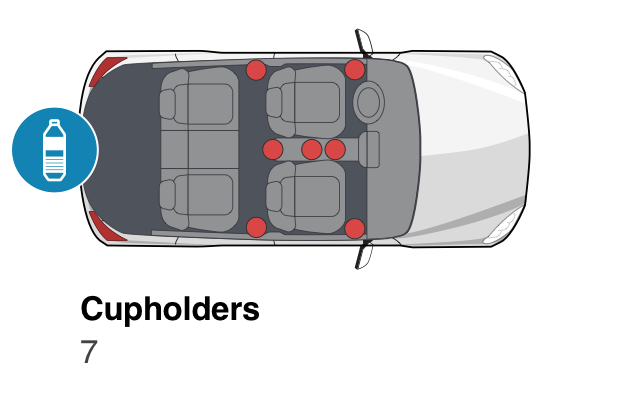
Vehicle Tested: 2017 Honda HR-V EX-L Navi
Interior Sound Level
Modern cabins do an excellent job of insulating passengers from ambient noise, but none can completely eliminate the sharp wind and the drone of tire noise when you’re traveling at highway speed. To measure the interior sound-pressure level, we use a Brüel & Kjær Type 2250-L sound meter, which we position in the middle of the first row of seats at the height of the driver’s ear. The meter automatically averages 15 seconds of sound in A-weighted decibels (dBA), taken while the test car is cruising at 70 mph. (A-weighting is an industry standard that adjusts decibel readings to better reflect how the human ear hears various frequencies.) We take two measurements and average the results. We also correct for speedometer inaccuracies with our GPS-based data loggers. It is worth noting that decibels are a logarithmic unit, so a rating of 40 decibels isn’t twice the sound pressure of 20 decibels; it is 10 times the sound pressure. A six-decibel increase roughly doubles the sound pressure.
Interior Sound Levels at 70 mph
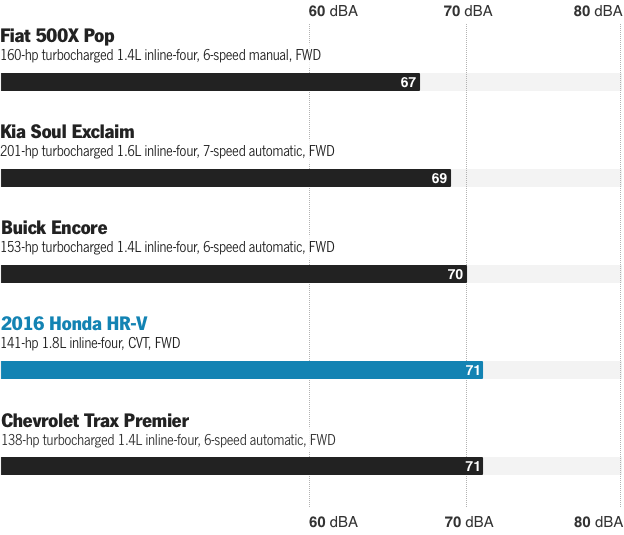
Seating Height
To accurately measure seating height—the distance from the road to the driver’s hip—we use an H-Point Machine (HPM), a precisely engineered device marketed by SAE (the Society of Automotive Engineers) International. This versatile tool, in conjunction with a laser device, reveals the width and location of roof-pillar visibility obstructions (blind spots). Our HPM and laser measurement tools determine the length of road obscured by the hood as well as the road obscured by the trunk or hatch (as seen through the rearview mirror).
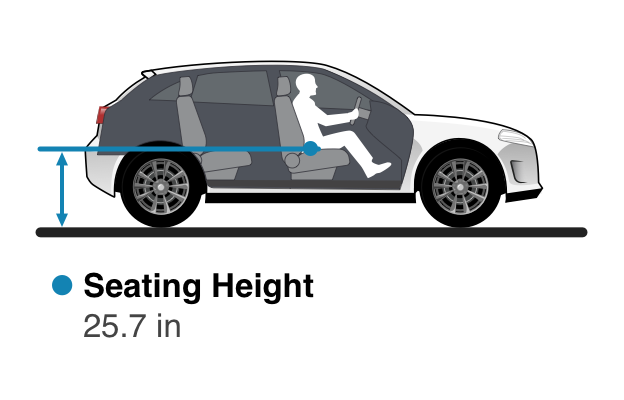
Test Results: Seating Height
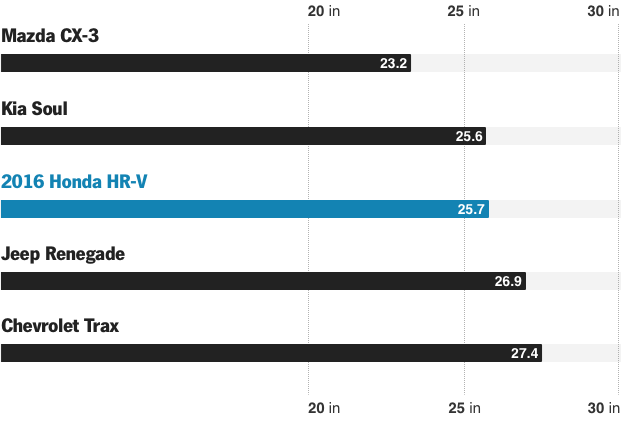
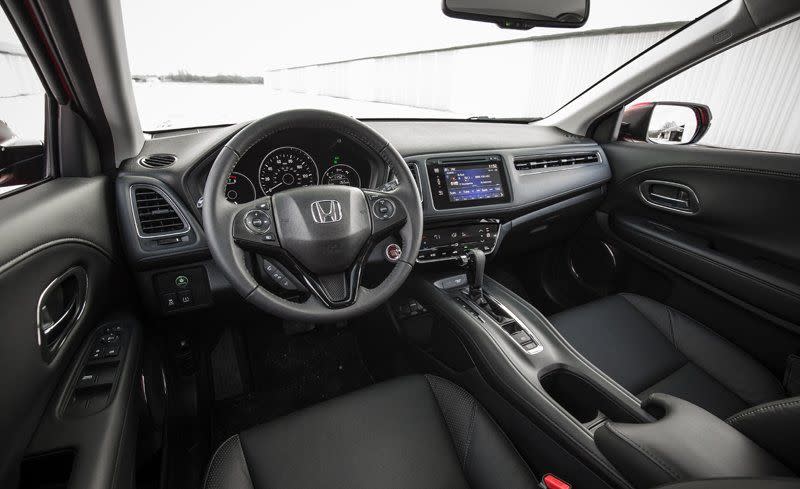
Blind Spots, Visibility, and Obscured Roadway
Due to its wide front roof pillars, the HR-V’s forward visibility is obscured more than its rivals’. A short hood helps with reducing the amount of obscured forward roadway, and rear visibility in the HR-V is top-notch.
Roof pillars protect occupants in a rollover crash, but they also create blind spots. We determine visibility by measuring the location and width of each pillar using an H-Point Machine and a laser beam (surrogates for a driver and eyeball, respectively). Front and rear visibility are calculated by subtracting the viewable area blocked by the pillars from a perfect 180-degree score.
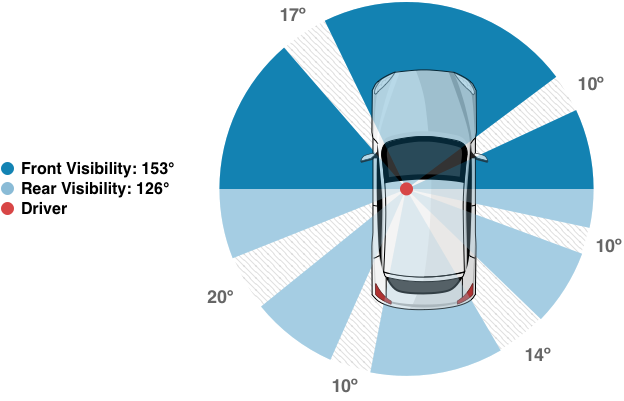
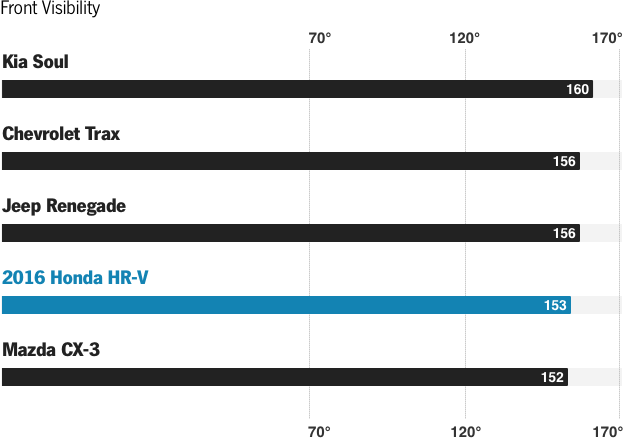
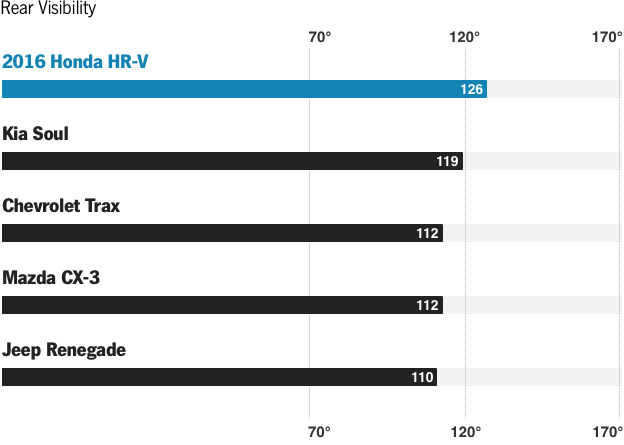
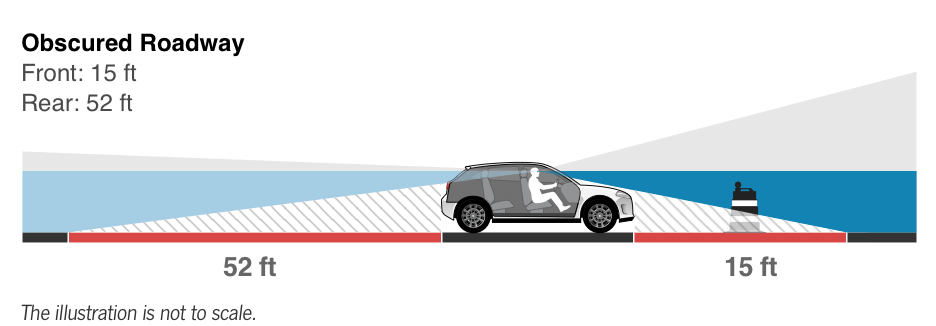
Test Results: Obscured Roadway
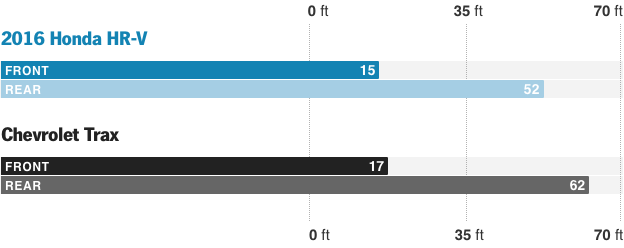
2018 HR-V In-Depth
You Might Also Like

 Yahoo Autos
Yahoo Autos 